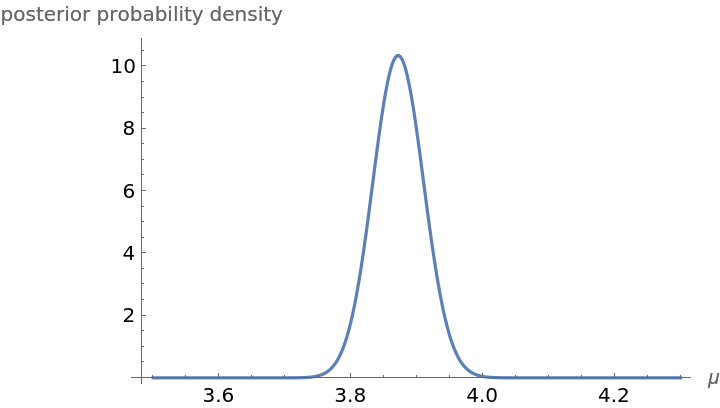Examples
Basic Examples (2)
View the data table:
Plot the number of α-particles in an interval of time versus observed count. In the figure m is the number of α particles observed in a particular interval and count is the total number of times that number of particles was observed in the entire experiment:
Scope & Additional Elements (3)
The mean of the data is:
The observations from which the first two columns of the data table were constructed are:
The mean can also be calculated from these:
Visualizations (3)
In the following we compute the empirical cumulative mass function and compare it to the theoretical cumulative probability mass function. The first is to find the mean of the observed data:
The empirical probability mass function is:
The comparison between observed and theoretical probability mass functions is:
Analysis (6)
Key data quantities are imported here:
The log likelihood of the observed data as a function of the Poisson parameter μ is:
The values of μ that maximizes the log likelihood is:
The Bayesian posterior probability distribution for μ on the assumption of a flat prior for μ on the interval (3.5,4.3) is:
The posterior mean of the Poisson parameter μ is:
The posterior standard deviation of the Poisson parameter μ is:
External Links
Bibliographic Citation
Marshall Bradley,
"Geiger Counter Data"
from the Wolfram Data Repository
(2022)
Data Resource History
Publisher Information
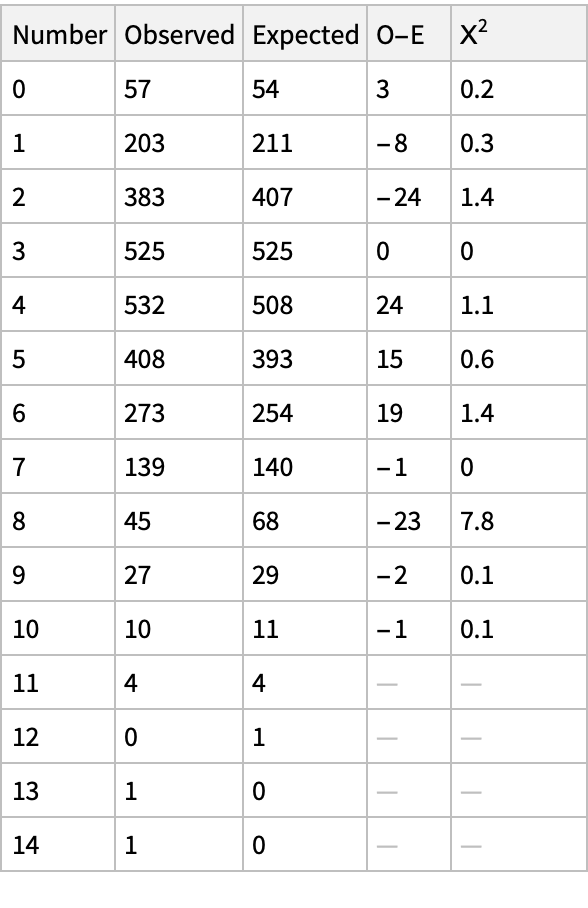
![dataset = ResourceData[\!\(\*
TagBox["\"\<Geiger Counter Data\>\"",
#& ,
BoxID -> "ResourceTag-Geiger Counter Data-Input",
AutoDelete->True]\)];
number = Table[dataset[[i]][[1]], {i, 1, 15}];
observed = Table[dataset[[i]][[2]], {i, 1, 15}];
ListPlot[Transpose[{number, observed}], AxesLabel -> {"m", "count"}]](https://www.wolframcloud.com/obj/resourcesystem/images/9f5/9f5f6bc3-3df2-4339-84bd-7072790611bd/249cac6524630aa6.png)
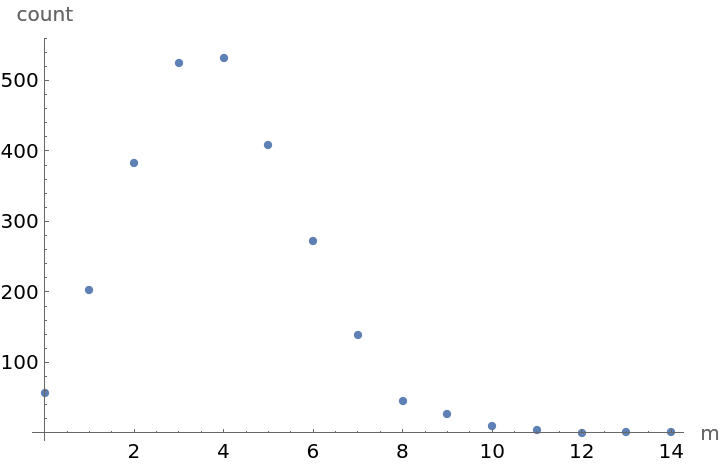
![dataset = ResourceData[\!\(\*
TagBox["\"\<Geiger Counter Data\>\"",
#& ,
BoxID -> "ResourceTag-Geiger Counter Data-Input",
AutoDelete->True]\)];
number = Table[dataset[[i]][[1]], {i, 1, 15}];
observed = Table[dataset[[i]][[2]], {i, 1, 15}];
N@number . observed/Total[observed]](https://www.wolframcloud.com/obj/resourcesystem/images/9f5/9f5f6bc3-3df2-4339-84bd-7072790611bd/24a0e53b98d026d7.png)
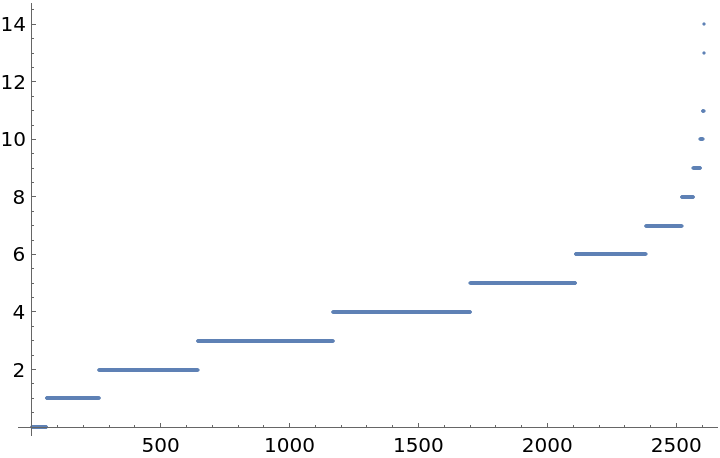
![dataset = Dataset[ResourceData[\!\(\*
TagBox["\"\<Geiger Counter Data\>\"",
#& ,
BoxID -> "ResourceTag-Geiger Counter Data-Input",
AutoDelete->True]\)]];
number = Table[dataset[[i]][[1]], {i, 1, 15}];
observed = Table[dataset[[i]][[2]], {i, 1, 15}];
\[Mu] = N@number . observed/Total[observed]](https://www.wolframcloud.com/obj/resourcesystem/images/9f5/9f5f6bc3-3df2-4339-84bd-7072790611bd/32bf6a05cc980884.png)
![cdfobs = Table[{i, cdf[i]}, {i, 0, 14}];
cdftheo = Table[{i, CDF[PoissonDistribution[\[Mu]], i]}, {i, 0, 14}];
ListPlot[{cdfobs, cdftheo}, Sequence[
AxesLabel -> {"number", "cummulative probability mass"}, PlotLegends -> {"observed", "theoretical"}, PlotMarkers -> "OpenMarkers"]]](https://www.wolframcloud.com/obj/resourcesystem/images/9f5/9f5f6bc3-3df2-4339-84bd-7072790611bd/3d4547b48ce3d64b.png)
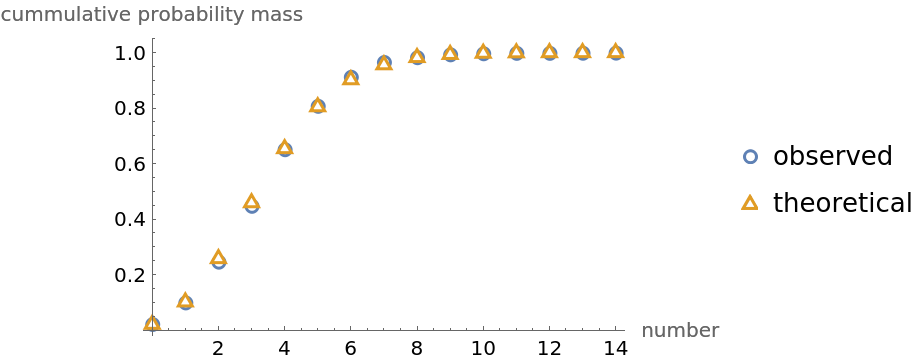
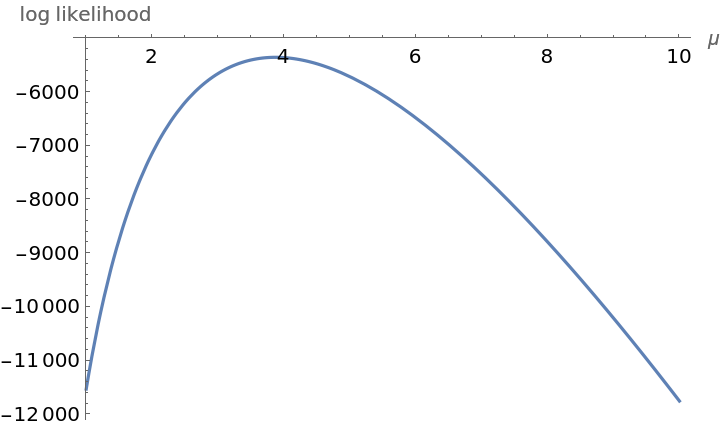
![\[Mu]min = 3.5; \[Mu]max = 4.3; d\[Mu] = 0.0025;
logpdf = Table[logLikelihood[\[Mu]], {\[Mu], \[Mu]min, \[Mu]max, d\[Mu]}];
logpdf = logpdf - Max[logpdf]; pdf = Exp[logpdf];
pdf = (d\[Mu]^-1) pdf/Total[pdf];
ListLinePlot[pdf, Sequence[
PlotRange -> All, DataRange -> {\[Mu]min, \[Mu]max}, AxesLabel -> {"\[Mu]", "posterior probability density"}]]](https://www.wolframcloud.com/obj/resourcesystem/images/9f5/9f5f6bc3-3df2-4339-84bd-7072790611bd/787dac28d101f602.png)
